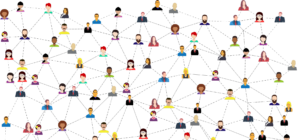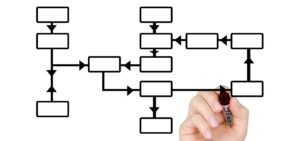State Priorities Guide Student Success Innovations
Pam Sornson, JD
August 18, 2023
The 5th Annual Future of Work Conference hosted by the Economic and Workforce Division (EWD) of Pasadena City College (PCC) is happening on campus in the Creveling Lounge on October 26th (8 AM – 2 PM; register here). Panelists will be discussing (among other topics) the need for California’s community colleges to develop programs and courses that respond to local, regional, and statewide workforce demands, as well as align with state and national economic priorities.
Revising any entrenched system to match emerging needs is an immense challenge for any organization. The task at hand becomes especially complex, however, when considering that California’s community college system comprises 116 schools serving almost two million learners every year. Conference speakers, hosts, and attendees will all gain insights and clarity about how the advanced education system might re-invent itself to ensure that every invested entity – students, schools, industries, and communities – can achieve its goals by working together to forge a stronger workforce development network.
Unique State = Unique Challenges
As a state, California enjoys a unique position within the country and the world. Its Gross Domestic Product (GDP) in 2022 was $3.6 trillion, which makes up over 14% of the total national economy. When compared to other countries (not American states), California boasts the 4th largest economy in the world, behind the U.S., China, Japan, and Germany. That economic power drives industry of all kinds, both established and emerging, and sustains a satisfactory standard of living for most of its residents.
However, the world is currently struggling to find its new, ‘post-COVID’ economic normal, with many industries shrinking and others blossoming. California’s industrial sectors are lurching along that path, too. In response to today’s truly unprecedented reality caused by the pandemic, climate change, social unrest, and other factors, the state and its industries are working to develop new avenues to achieve economic growth and recover from economic losses. Both public and private entities are setting new goals and priorities to clear away obsolete practices and policies to make room for innovation and expansion. Financial and industry analysts are offering their take on the situation; the conference will look at how community colleges will contribute to the process of developing and achieving system-wide solutions.

Addressing Immediate ‘Priorities’ …
The state government establishes its priorities in part on previous initiatives and in part on consumer inputs. A September 2022 survey by the Public Policy Institute of California revealed that remediating economic concerns is the highest priority for most respondents, who highlighted the significance of improving job availability and curbing rising inflation. (Of those respondents, 38% reported suffering economic hardships caused by rising prices. Half of the lower-income adults surveyed raised the same concerns, as did higher percentages of Latinx and African Americans. Central Valley residents reported the highest number of and most severe challenges, while the San Francisco Bay area reported the fewest.)
Consequently, the state government has had to pivot away from earlier priority strategies to address its constituents’ immediate concerns. One of those pivots is to redirect public funding toward training workers for businesses and industrial sectors that show a promise for economic growth. The state’s eight-member Employment Training Panel (ETP) establishes those funding priorities based on demand by employers and changes in the state’s labor markets and the overall economy.
The ETP FY23/24 ‘Priority Industry’ funding strategy allows for a higher fixed fee reimbursement for businesses in specific industries that are clamoring for more well-trained workers; employers who underwrite the expense of training their workers will receive a higher rate of reimbursement for that purpose than they would have received in previous years. The practice encourages companies to invest in training processes without having to experience financial hardships by doing so. They get a more robust workforce, and California gets more workers on the job.
The agency’s FY23/24 newly identified ‘priority industries’ include:
Accommodation and Food Services
Administrative and Support and Waste Management and Remediation Services
Agriculture, Forestry, Fishing, and Hunting
Arts, Entertainment, and Recreation
Construction
Finance and Insurance
Health Care and Social Assistance
Information
Manufacturing
Mining, Quarrying, and Oil and Gas Extraction
Other Services (except Public Administration)
Professional, Scientific, and Technical Services
Transportation and Warehousing
Utilities
Wholesale Trade
By identifying these industry sectors as ‘priority,’ the state is asserting its belief that they will be responsible for a significant portion of California’s future economic growth. The choices will guide funding support and industry collaboration toward those initiatives.

… While Remaining Focused on Long-term Goals
In addition to providing immediate relief for today’s economic woes, California has also held fast to its investments in longer-term initiatives, many of which will also facilitate some relief from current economic stresses.
Decades of reduced spending have left much of the state’s infrastructure in disarray. Roads, bridges, schools, and other fundamental community assets have eroded in quality and durability. Funding directed at making those repairs will also generate new jobs and ease inflation concerns.
Regional environmental conditions have crippled hundreds of communities. Drought in the Central Valley and wildfires in counties across the state have caused billions of dollars in damage. The state is investing resources to recover from those losses while rebuilding impacted communities and industries.
Climate conditions, in general, are also getting attention from the state government. Renewable energy initiatives, in particular, encourage the development of new businesses to facilitate state mandates on controlling greenhouse gases and reducing the state’s reliance on fossil fuels.
This short synopsis lists only a few of the local, regional, and national priorities that guide decision-making for California’s community colleges. The October 26th discussion will focus on them closely as those experts collaborate to craft new educational pathways to facilitate their attainment.























